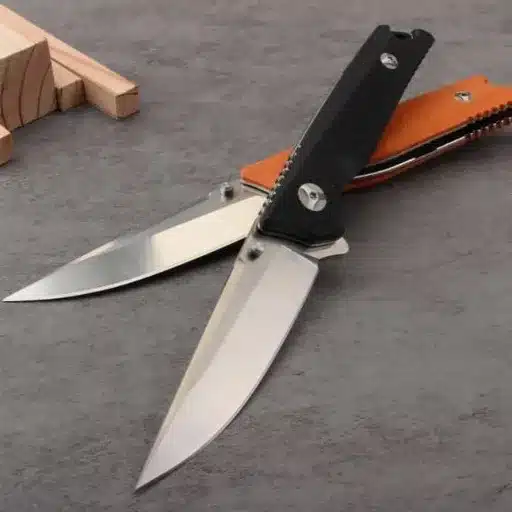While some consider edge retention a decisive factor in the choice of knife steel, Nitro-V and S35VN are the two steels generally pitted against one another in the domain of excellent knife steels-theoretically given the steel’s properties and performance potential. But how would these two steels conditions go while tested for edge retention over long hours of use? These are the key differences taken up in this article between Nitro-V and S35VN, focusing on edge retention and what that means for collectors, EDC, and outdoor users. At the end of the article, you should be able to decide which steel fits best with your requirements and preferences.
Comparing S35VN and Nitro-V Steel Efficacy
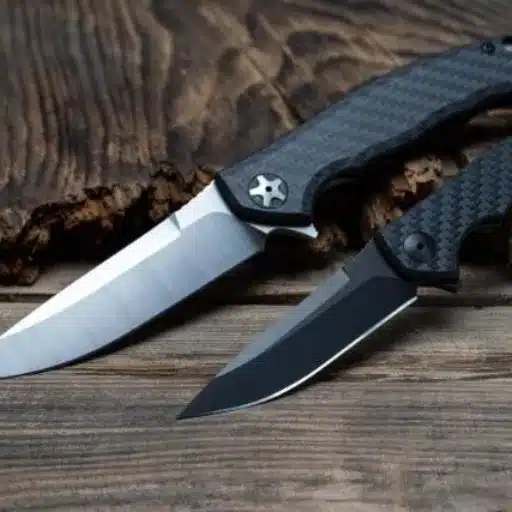
S35VN Steel
Developed by Crucible Steel Company in which expert knifemakers’ comments were taken into consideration during development, S35VN is a high-grade stainless steel with stain of the best edge retention, toughness, and corrosion resistance. It has 1.40% Carbon, 14.00% Chromium, 3.00% Vanadium, and 2.00% Molybdenum, plus a small trace (0.50%) of Niobium, which also contributes to its strength and wear resistance in a big way.
This makes it best suited for high-performance knives, which include tactical, survival, and heavy-duty types. It boasts an HRC range of 58-61, providing the star balance of longevity under hard-working conditions. Yet the trade-off tends to be a bit of difficulty in sharpening, which means that it is probably more suited to professional shoe-level types or those who sharpen on a regular basis.
Nitro-V Steel
Nitro-V Steel, produced in New Jersey Steel Baron, targets outdoor users and chefs who prefer maintenance ease. This stainless steel is an upgrade of AEB-L, with added Nitrogen (0.08%-0.11%) and Vanadium (0.10%-0.30%) to boost toughness and wear-resistance. Nitro-V balancedly comprises of 0.95%-1.00% Carbon and 11.00%-12.00% Chromium that grants impunity from corrosion and moderate edge retention.
Rockwell Hardness (HRC) usually falls within 57 to 62, making it much adaptable to serve various requirements found in cutting. One also enjoys that Nitro-V is easier to sharpen than S35VN, a trait much loved by hobbyists and users needing dependable performance in humid, wet conditions.
Quick Comparison: Both Nitro-V and S35VN are excellent steel options, with Nitro-V taking the edge when it comes to ease of sharpening and high corrosion resistance, especially in wet environments. The S35VN, on the other hand, becomes the option if one is looking for better edge retention and overall toughness.
Composition of Nitro-V and S35VN
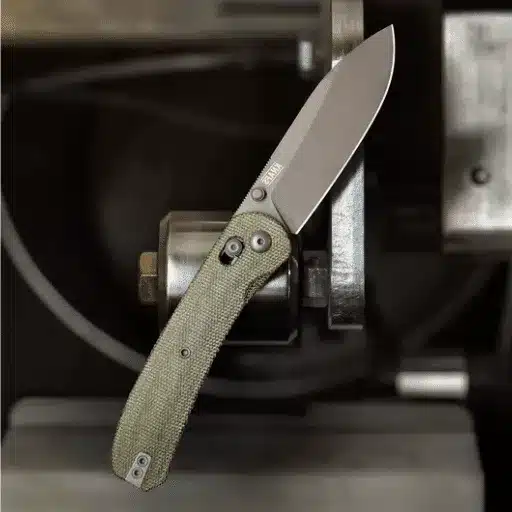
Chemical Makeup of Nitro-V
Nitro-V is considered a high-grade stainless steel that, through a balanced range of elements, achieves its stellar attributes. Its chemical makeup is optimized for high corrosion resistance, edge retention, and toughness. It is approximately composed of the following chemicals:
| Element | Percentage | Function |
|---|---|---|
| Carbon (C) | 0.68% | Contributes to hardness and edge retention. The relatively high carbon content enhances Nitro-V’s edge retention ability greatly. |
| Chromium (Cr) | 12.50% | Being one of the most important elements for stainless steel, it bestows highly resistant corrosion properties. |
| Vanadium (V) | 0.10% | Vanadium refines the grain structure leading to enhanced toughness and edge stability. |
| Molybdenum (Mo) | 0.08% | Enhances corrosion resistance especially while working in hard environments. |
| Nitrogen (N) | 0.11% | Makes corrosion resistance better with slight contributions towards strength and wear resistance. |
Chemical Makeup of S35VN
Ironically named S35VN, it is a martensitic stainless steel developed by Crucible Industries to combine excellent toughness, edge retention, and corrosion resistance. Its chemical composition is fine-tuned to balance hardness and workability, thereby making it very versatile for high-performance knives and tools. Here is a detailed breakdown of its chemical makeup:
| Element | Percentage | Function |
|---|---|---|
| Carbon (C) | 1.40% | Carbon is the main element ensuring high hardness and edge retention. It provides excellent wear resistance and sharpness durability to S35VN. |
| Chromium (Cr) | 14.00% | Chromium enhances corrosion resistance while adding to hardness. It ensures the alloy does well in harsh or wet environments. |
| Vanadium (V) | 3.00% | Vanadium forms vanadium carbides that improve wear resistance and provide fine grain structure, allowing a steel to hold a very sharp and durable edge. |
| Molybdenum (Mo) | 2.00% | It enhances strength and corrosion resistance, especially in extreme environments, and improves resistance against high temperatures. |
| Niobium (Nb) | 0.50% | The incorporation of niobium (previously columbium) in S35VN improves toughness, thereby enhancing strength without compromising ductility. |
| Iron (Fe) | Balance | The remainder of the composition is primarily iron, which acts as the base element. |
Performance Characteristics
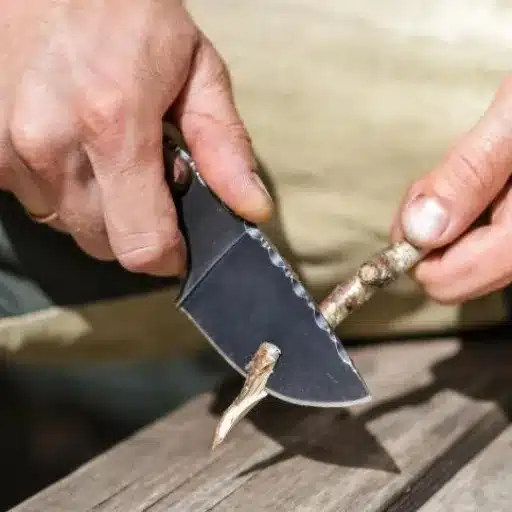
I would go so far as to say that S35VN is one of the best steels for high-end uses. The niobium addition increases toughness while retaining edge retention and corrosion resistance; further, it is easier to sharpen than most other super steels.
Edge Retention: Nitro-V vs. S35VN
Edge retention is an important consideration in steel comparison since it dictates cutting time i.e., for how long a knife would maintain its sharp edge while using it. Both Nitro-V and S35VN hold decent edge retention, but it differs depending on their composition and relative application.
S35VN, while providing an excellent all-around balance of properties, typically performs slightly better in edge retention than Nitro-V. Vanadium carbides are the single biggest cause of very high wear resistance in S35VN. Independent tests have shown S35VN to be able to withstand prolonged cutting applications with very little vendor’s edge degradation, hence, favored for high-performance knife and tooling applications.
Toughness and Better Steel
When comparing the toughness of Nitro-V and S35VN, one has to look for the results of the stress and impact exerted upon either steel. Toughness is the ability to resist chipping or cracking or breaking down in heavy or abrupt usage. Nitro-V is generally tougher since its composition harbors more ductility, enhanced by nitrogen; this makes it less apt to chip when working with lateral force or impact situations such as prying or batoning.
S35VN, while tough, was never designed for maxing out toughness; rather, it was conceived to maintain a balance between edge retention and corrosion resistance. The inclusion of niobium for refining carbide formation also contributed to a reduction in brittleness when compared to its predecessor S30V; but it still is less able to withstand chipping in sustained hard impact tests when compared to Nitro-V.
Easy Sharpening
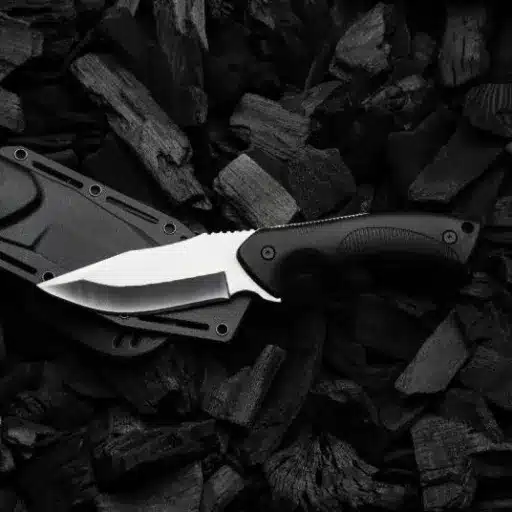
Sharpening-wise, I think Nitro-V is a bit easier to sharpen than S35VN. The softer structure allows one to quickly form a burr and remove it, thereby sharpening more efficiently. Incidentally, S35VN tends to stay sharper longer and thus require less frequent sharpening, which might be a great plus depending on the needs of the person.
Sharpening Nitro-V Steel: Tips and Considerations
Sharpening Nitro-V steels calls for careful consideration of their peculiar properties because they’re made for a balance of toughness, edge retention, and ease of maintenance. Due to the fine grain structure and nitrogen alloying, Nitro-V steel is easier to sharpen even for less skilled people.
Sharpening Methods
Sharpening stones such as diamond and ceramic are the most recommended for sharpening of Nitro-V. They ensure sharpness for most high-performance stainless steels. Use coarse grit for initial sharpening if the edge is dull, and proceed with finer grits to smooth the edge and finish polishing to a mirror-like shine. A suggested progression would be to begin with 400 grit, go on to 1000 grit, and complete with either 3000 grit or higher for that final cutting finish.
Stropping for Edge Enhancement
Stropping the blade on leather (or any other fine abrasive surface) impregnated with a polishing compound would prove to be a benefit. This will help polish away microscopic burrs, further polishing the edge and hence enhancing its ability to cut better and longer.
Sharpening S35VN: Techniques and Considerations
Setting the Edge Angle:
Angle consistency is the most important factor. Most S35VN blades will ideally range between 17-22 degrees per side depending on use. More obtuse angles may be better suited for field knives or heavy-duty tools where durability takes precedence over sharpness, whereas finer cutting may favour a more acute edge.
Using Progressive Grits:
Use the coarse diamond stone first (around 200-400 grit) for material removal and edge reprofiling as needed. Then move on to finer grits of 600-1000 and higher for refinement and further polishing of the edge that is essential to obtaining a razor-sharp edge and smooth finish.
Honing and Stropping:
Hone the edge with a ceramic rod or high grit stone to remove the burrs from sharpening and to align the edge best. Finish by stropping on a leather strop with a fine polishing compound for a mirror finish and to mitigate microserrations.
Typical Applications for Each Steel Type
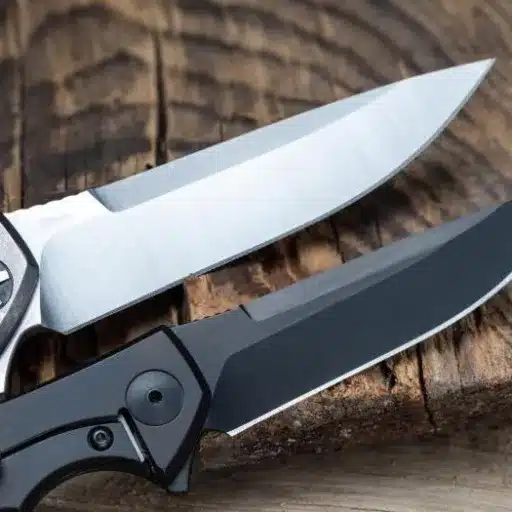
For softer steels, I tend to use them in cases where ease of sharpening is required-everyday cutting tasks or general-purpose tools. Harder steels are what I lean toward in the applications where the edge needs to be retained for longer or require more toughness, such as hunting knives or heavy work blades.
Customary Use of Nitro-V Steel
Knife Blades
The manufacturing of knife blades at higher end performance levels such as chef’s, hunting, and EDC) blades is one of the important uses of Nitro-V. The high corrosion resistance of the material ensures that the knives can be used in wet environments poorly, while the ability of this steel to obtain a razor edge makes it on the cutting edge for intricate cutting tasks. Knife makers love Nitro-V as it can be heat-treated to a degree of toughness to prevent chipping when charging hard use.
Outdoor Equipment
The toughness levels and wear resistance properties make Nitro-V the main alternative for outdoor equipment such as survival tools and fixed blade knives. Maintaining edge integrity even under challenging conditions makes it reliable for adventurers and survivalists who need their tools to rise up to various challenges.
Food-Grade Applications
Nitro-V steel’s high resistance to corrosion also grants it access to food-safe environments. Items such as food preparation equipment and kitchen utensils made from Nitro-V undergo less deterioration when exposed to acids and moisture, making them ideal candidates for modern industrial kitchens and homes alike.
Custom Knives and Tools
Custom knife makers favor the machinability and polishability of Nitro-V. It allows for a mirror finish that accentuates the look of both utilitarian and sculptural pieces. Moreover, the characteristics allow for intricate designs and an expensive level of craftsmanship.
Suitability for Different Knife Styles
EDC (Everyday Carry) Knives
Being well balanced for hardness (around 59-61 HRC) and wear resistance, S35VN has become a much sought-after steel used in EDC knives. It holds its edge much longer so users need not sharpen it frequently, something very important for daily use. Additionally, being resistant to corrosion, it needs less maintenance, which is perfect for those who put their knives through different conditions.
Outdoor and Survival Knives
In outdoor or survival situations, knives must be strong and tough. With excellent toughness, the S35VN steel makes these knives reliable for hard use activities such as chopping, batoning, or prying without failures of excessive chipping or breakage. Additionally, it can withstand moisture and humidity, making it reliable for prolonged activities in the wilderness, even in a rigorous environment.
Kitchen Knives
S35VN steel is quite rust- and stain-resistant and also does very well in the presence of acidic foods, making it a great choice for kitchen knives. It holds its edge for a long period so you don’t have to keep honing it while prepping. These features on S35VN knives make it a favorite with many chefs and culinary enthusiasts, especially in environments that involve a lot of moisture.
Reference Sources
-
Alloy Materials
- Title: “Steel Showdown: Nitro V vs S35VN – Which Knife Steel Reigns Supreme?”
- URL: alloy-materials.com
- Why Reliable: This source provides a detailed comparison of the key characteristics, applications, and performance of Nitro V and S35VN steels, including edge retention, corrosion resistance, and toughness.
-
Keganico
- Title: “Nitro-V vs S35VN: The Ultimate Steel Comparison”
- URL: keganico.com
- Why Reliable: This article offers a comprehensive breakdown of the chemical composition, performance attributes, and practical applications of both steels, catering to knife manufacturers, retailers, and end-users.
-
Keganico
- Title: “Nitro V Steel Guide: Composition, Performance & Comparisons”
- URL: keganico.com
- Why Reliable: This guide focuses on Nitro V steel, comparing it with S35VN and other popular steels, and provides insights into its market positioning, performance, and ideal applications.
Frequently Asked Questions (FAQs)
Is Nitro V steel good for knife blades?
This is an excellent answer to the question, “Is Nitro V steel good for knife blades?” The steel possesses balanced properties that keep the edge well and resist corrosion, with easy sharpening ability. Hence, the steel can be shaped for every type of knife from carry knives to more specialized tools.
What are some advantages of S35VN steel in knife making?
It has superb toughness, edge retention, and wear resistance; hence the set of advantages that S35VN steel enjoys. It was developed for enhancing the performance of its predecessor, S30V, so that it is the steel of choice for production of funds knives that must ensure durability and long-term performance by their name.
How does D2 steel compare with Nitro V and S35VN?
D2 steel has traditionally been considered great for wear resistance but unlike Nitro V and S35VN, it does not have any resistance to corrosion. So, even though D2 steel can stay sharp for a long time, its performance might not be so consistent in humid or wet conditions compared to the Nitro V and S35VN steels, which are designed keeping such conditions into consideration.
Which one corrodes less, Nitro V or S35VN?
The corrosion resistance in the Nitro V steel is much higher as compared to the S35VN steel due to its higher chromium content and better manufacturing procedure. Thus, environments that have moisture and humidity are best suited for Nitro V steel.
Why is Nitro V easier to sharpen than S35VN?
The more even distribution of carbides within the composition of Nitro V allows for easier sharpening. On the contrary, S35VN, while still fairly easy to sharpen, carries more complex carbides that add a little difficulty when sharpening compared to Nitro V.
Final Thoughts
Both Nitro-V and S35VN offer exceptional performance for different needs. Choose S35VN for maximum edge retention and demanding applications, or select Nitro-V for easier maintenance and superior corrosion resistance in wet environments. Your specific use case and maintenance preferences should guide your decision.

